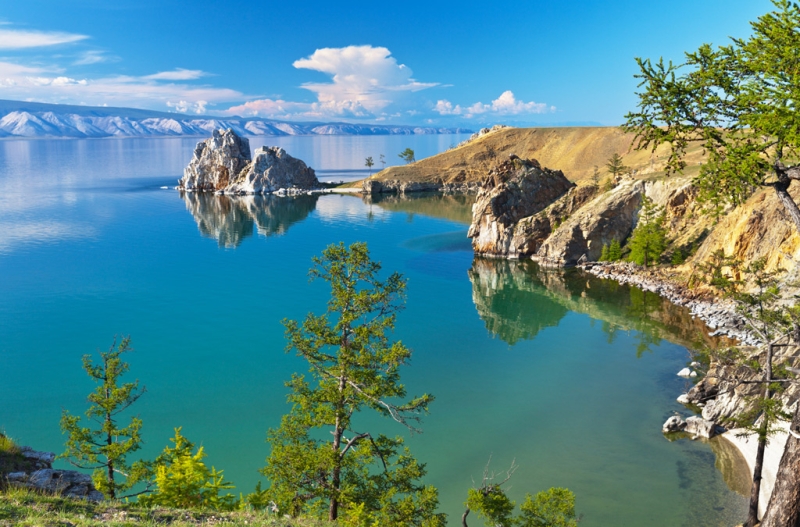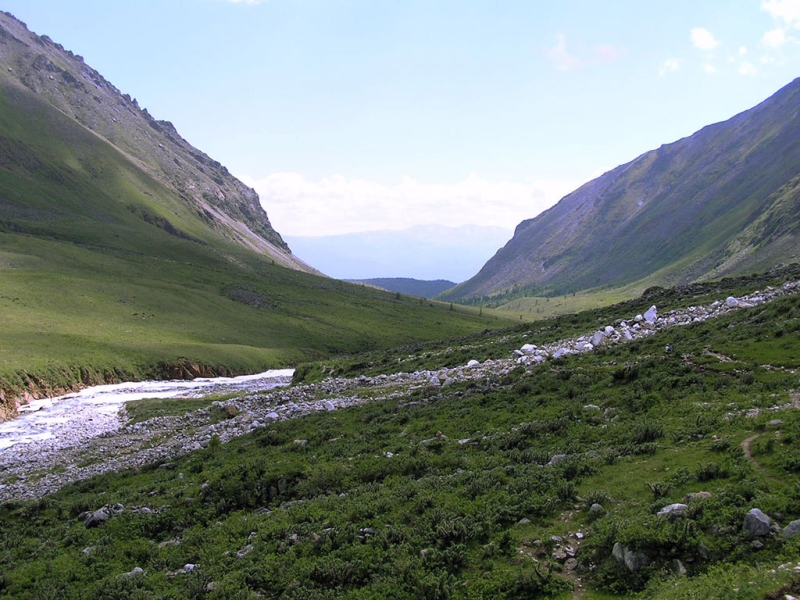
Lake Baikal and its surroundings attract the attention of tourists at any time of the year, be it hot summer or frosty winter. This is the deepest lake in the world, its depth is 1642 meters. For comparison, the bottom of the second deepest Lake Tanganyika is located at a distance of 1,470 meters from the surface, that is, Baikal has a gap of more than one hundred and fifty meters. Why is the lake so popular? Now we’ll explain. We have compiled a list of nine places that we recommend visiting when traveling to Lake Baikal.
Olkhon

More than one and a half thousand people live on the island, the land area is 730 square meters. km. covered with dense forests. This is where the name of the place came from: “Oikhon” translated from the Buryat language means “woods”, and the distorted pronunciation led to the appearance of “Olkhon”. The nature here is varied: steppes, groves, mixed forests and swamps. The island is connected to the mainland by ferries and ships.

You can not only arrange a camping trip, but also visit the local local history museum. It is located in a former school building and is dedicated to the history and culture of Olkhon. The Shamanka rock is also widely known: in the old days, shamans brought gifts here and offered prayers to the spirit who lived in a cave under the rock.
Baikal Museum

Photo: b1.culture.ru
The Museum of the Irkutsk Scientific Center of the Siberian Branch of the Russian Academy of Sciences explores Baikal from all sides: changes in the composition of water, temperature dynamics, fish living in the lake and their population, as well as many other aspects associated with this beautiful place.

Photo: b1.culture.ru
The exhibits are also somehow connected with the lake. Some excursions are dedicated to the animal and plant world, others offer to go down to the bottom of Lake Baikal (alas, virtually, not in reality),
still others talk about the evolution of local nature and the changes that occurred in the lake.
Nerpinaria

The seal is a type of seal; The Baikal seal lives in the northern regions of the lake; animals often come ashore near the Ushkany Islands in June. Seals are cautious and do not make contact with humans, so you are unlikely to be able to communicate with these animals in the wild.

There are two nerpinarias near Lake Baikal – one is in Irkutsk, the other in Listvyanka. Viewers are offered an entertainment program with trained seals who perform staged performances: counting, singing, playing with a ball and even drawing.
Mount Zhima

Photo: ic.pics.livejournal.com
The mountain is located on Olkhon Island, this is its highest point. Zhima rises 1276 meters above sea level. It stands in the eastern part of the island in the middle of a picturesque landscape. Local residents called this mountain sacred – it was believed that there was a house of spirits here. Pilgrims from different regions came here to climb Zhima and honor the higher powers.

Photo: ic.pics.livejournal.com
The ascent will take about a day, and you will need to make your way through the forest – there is no hiking trail as such. Tourists are also advised to take a large supply of water – there are no clean streams on the mountain.
Severobaykalsk

The small town was founded during the construction of the Baikal-Amur Mainline. The plans were, as usual, Napoleonic: it was expected that Severobaikalsk would grow to approximately 140 thousand inhabitants. For the last twenty years, the population has been falling from year to year; at the moment just under 24 thousand people live here.
What to see here? Firstly, the Baikal-Amur Mainline is a grandiose structure, the construction of which required the mobilization of enormous labor resources. Secondly, there are thermal springs on Kotelnikovsky Cape, and there is a recreation center right there. From Severobaikalsk you can walk to Mount Chersky, which is considered the highest point of the Baikal ridge (2588 meters). The climb is quite difficult and requires good preparation.
Lake Frolikha

Photo: geo.ru
The lake appeared in ancient times – it is believed that the depression in the ground, which was then filled with water, was formed almost during the Ice Age. The lake looks great – dark blue water surrounded by wooded hills. Approximately the same landscape was here hundreds of thousands of years ago.

Photo: baikalika.ru
The lake is home to many fish, but it’s better to fish in other places – the Davatchan, a relative of salmon listed in the Red Book, is found here. But you can go boating. Perhaps Lake Frolikha is one of the most beautiful places in Lake Baikal, and it is definitely worth seeing.
Mineral springs

Photo: selorodnoe.ru
There are many springs with healing water on Baikal, which strengthens the immune system and heals the body.
A large spring is located in the village of Arshan. It is recommended to drink the local water for gastritis and stomach problems. Baths near the village of Zhemchug are also known. The water here is used to improve the functioning of bones and joints, as well as for skin diseases. If you have radiculitis and similar ailments, go to Zmeinaya Bay, where there are two springs with healing baths. In addition to these places, there are many others; finding suitable waters will not be a difficult task.
Tunka Valley

This is a network of depressions that stretches from east to west for almost two hundred kilometers. In 1991, the Tunkinsky National Park was founded here. Among its inhabitants are red-backed vole, ermine, northern pika and other living creatures, including many birds.

Of cultural monuments of interest are the ancient Buddhist architectural ensemble of Burkhan-Baabay, the sacred cult place Bukha-noyon – a rocky outcrop of a marble area on the slope of a ridge, shaped like a bull, with widely spaced horns. For local residents, the bull is a symbol of wealth, prosperity and the power of nature. There are also churches here: Svyato-Pokrovskaya, Svyato-Innokentyevskaya, Prince-Vladimirskaya, Peter and Paul. There are also mineral springs on the territory of the Tunka Valley.
Barguzinsky Reserve
The reserve was founded almost ninety years ago – in 1917. You can visit this place only after obtaining permission from the administration of the Federal State Budgetary Institution “Reserve Podlemorye”.

Photo: nature.baikal.ru
On the territory of the reserve you can see a strikingly beautiful phenomenon – the flowering of a lotus. Most of the plants on the territory of the reserve are listed in the Red Book due to extinction or uniqueness. Representatives of the fauna here can be found sables, squirrels, chipmunks, forest lemmings, red deer, wolves, ermines and many others.

